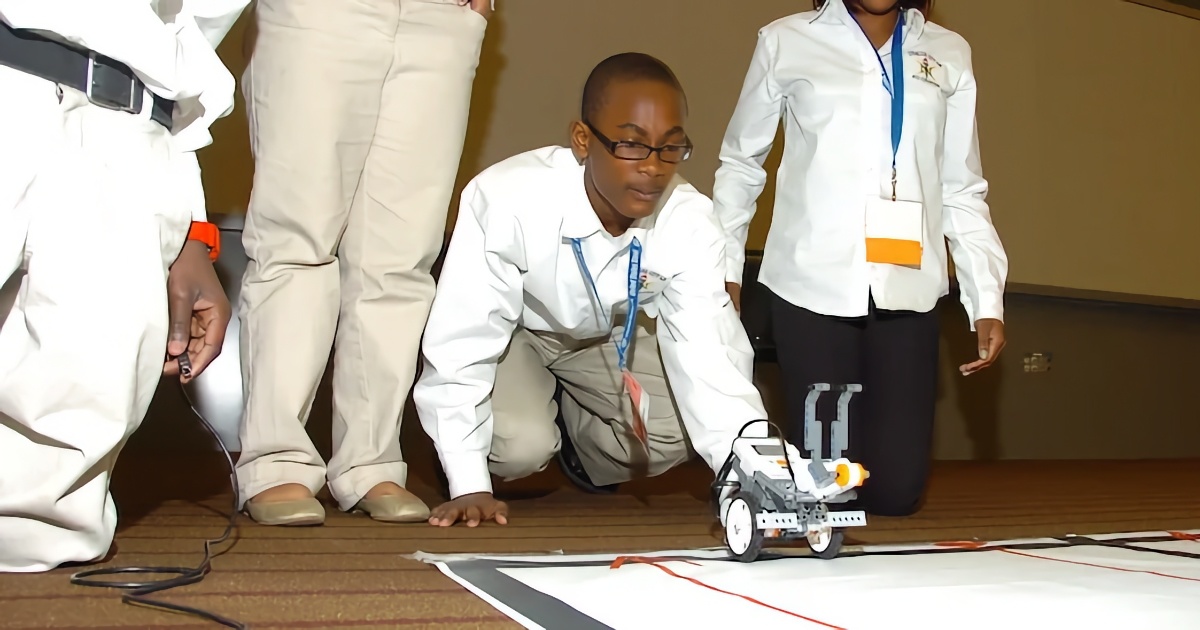
Aug 9, 2018 12:00:00 AM
Shayla Toran is a third-grade student who thrives when presented with opportunities to discover how things work. Two years ago, she stepped into D.C.-based Eagle Academy Public Charter School’s Science, Technology, Engineering, Arts and Mathematics (STEAM) Teaching Lab for her very first lesson, and I saw her eyes light up. Since then, Shayla’s interest in STEM education has grown and her ability to grasp STEM-related content has accelerated. Shayla can master complicated concepts quickly, whether that was learning to code by joining the Coding Club or building a Remotely Operated Vehicle (ROV) from scratch as part of the Seaperch Underwater Robotics Program. By embracing every STEM-related opportunity afforded to her, Shayla has grown into an energetic, intelligent and promising leader in the STEAM classroom.
As a K-3 STEAM teacher, you can imagine my excitement when she expressed a desire to pursue a career in STEM.
Shayla is destined for great things, and I was thrilled to have played a small role in helping her discover her passion.
Unfortunately, success stories like Shayla’s are not always recognized or even publicized in the most underserved neighborhoods of the country. Bright and highly intelligent African American students are often defined by their ZIP code, diminishing the possibility for exposure and recognition of their academic success and intelligence. According to a recent study by Stanford economist Raj Chetty, children from high-income households are 10 times more likely to become inventors than those from low-income households. The study found that exposure to innovation during childhood was the one critical factor determining whether someone becomes an inventor. That means we—the teachers, parents, legislators and community leaders—must ensure every child gets that exposure from the start. It is up to us to prevent more generations of children from becoming what Chetty calls “lost Einsteins”—individuals who would have created highly impactful innovations had they pursued a career in the field.

We can focus on implementing STEM-focused programs in the most underserved communities. And this should begin in early childhood education. Take for example the SeaPerch program we offer at Eagle Academy. This is a hands-on, project-based learning opportunity that is structured but student-led. Students at Eagle Academy are first exposed to robotics in kindergarten when they’re allowed to play and code Wonder Robots. Students then matriculate through the STEAM program learning more about how robots work and the materials that can be used to build a robot. Everything from cardboard boxes to aluminum cans and plastic soda bottles is used for students to explore, build, and tinker with to develop a positive disposition toward STEM subjects and related professions. The idea of the progression of the SeaPerch program from Pre-K is for students to experience exploratory play using the tools that go into building their underwater ROV. Over time, the children will be introduced to more advanced ways of interacting with the materials so that, by third grade, they will have the greatest success in their efforts building an ROV.
Eagle Academy is not a private school comprising the top 1% of households. We are a public charter school located in Ward 8 of Washington, D.C.—a neighborhood where crime is prevalent and residents struggle with the highest unemployment rate in the district. While African-Americans make up 93% of those within Ward 8, few start a career in a STEM-related field. According to the Kids Count Data Center website, in 2016, the child poverty rate in Ward 8 is 48.5%.
Eagle Academy is working to pioneer a new way of change so that poverty does not limit education possibility. According to a 2016 study by Georgetown University, African Americans account for only 8% of general engineering majors, 7% of mathematics majors, and 5% of computer engineering majors. This matters because STEM careers are paving our country's path, and we can’t afford any “lost Einsteins” to be left behind. Shayla’s mom, Shamelli, said, “Shayla has enjoyed and excelled in the STEM program at Eagle Academy PCS. As a single parent, I would like for my child to be afforded the same academic privileges as other students in her grade level and not allow my financial situation to count her out of opportunities.”
It is time for us to step up and implement more STEM-focused programs in the most underserved communities.
It is time every child—regardless of race, gender or ZIP code—has the chance to succeed.
As a school, we are committed. As a community, we are united. As a teacher, I am passionate about making this happen for underserved scholars in Ward 8 of D.C. I hope you’ll join me in making a difference.
Courtney J. Brown is a K-3 STEAM Teacher at Eagle Academy Public Charter School, D.C.’s first exclusively early childhood public charter school serving grades pre-K-3. She has been an educator for more than six years, working with children of all ages and backgrounds to encourage and motivate them to succeed with an emphasis in math and science.
Few issues in education spark more tension and debate than standardized testing. Are they a tool for equity or a burden on students? A necessary check on school systems or a flawed measure of...
Charter schools are public schools with a purpose. Operating independently from traditional school districts, they're tuition-free, open to all students, and publicly funded—but with more flexibility...
Despite the benefits of a diverse teaching force, prospective teachers of color fall out of our leaky preparation pipeline at every stage: preparation, hiring, induction, and retention. Here’s what...
Ed Post is the flagship website platform of brightbeam, a 501(c3) network of education activists and influencers demanding a better education and a brighter future for every child.
© 2020-2025 brightbeam. All rights reserved.
Leave a Comment